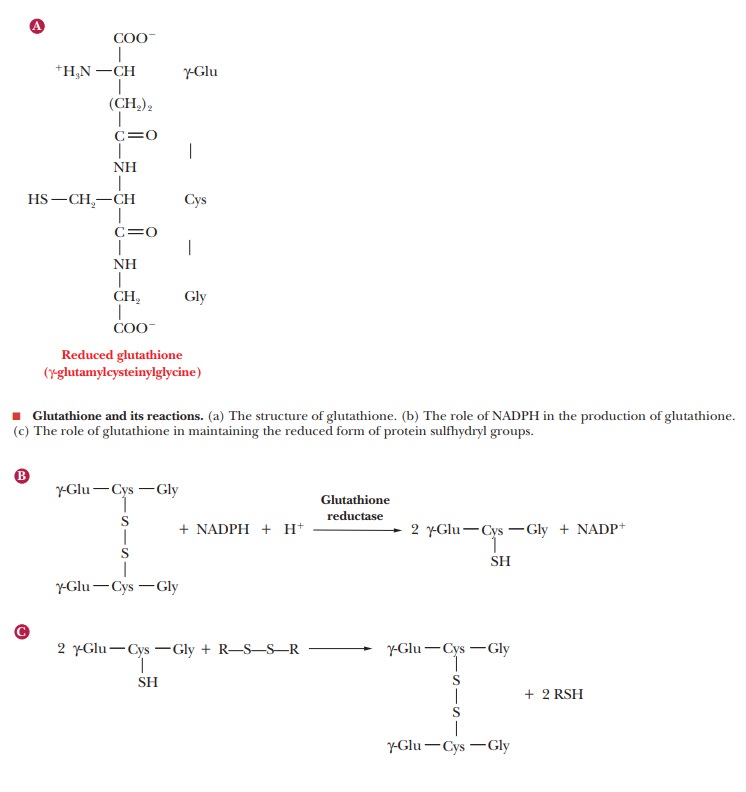Chapter: Biochemistry: Storage Mechanisms and Control in Carbohydrate Metabolism
The Pentose Phosphate Pathway and Hemolytic Anemia
The Pentose Phosphate Pathway and Hemolytic Anemia
The pentose phosphate pathway is the only source of NADPH in red
blood cells, which, as a result, are highly dependent on the proper functioning
of the enzymes involved. A glucose-6-phosphate dehydrogenase deficiency leads
to an NADPH deficiency, which can, in turn, lead to hemolytic anemia because of wholesale destruction of red blood
cells.
The relationship between NADPH deficiency and anemia is an indirect
one. NADPH is required to reduce the peptide gluta-thione from the disulfide to
the free thiol form. Mammalian red blood cells lack mitochondria, which host
many redox reactions.
Consequently, these cells are limited in the ways in which they can deal with redox balance. A substance like glutathione, which can take part in redox reactions, assumes greater importance than would be the case in cells with large numbers of mitochon-dria.
The presence of the reduced form of glutathione is neces-sary
for the maintenance of the sulfhydryl groups of hemoglobin and other proteins
in their reduced forms, as well as for keeping the Fe(II) of hemoglobin in its
reduced form.
Glutathione also maintains the integrity of red cells by react-ing
with peroxides that would otherwise degrade fatty-acid side chains in the cell
membrane. About 11% of African-Americans are affected by glucose-6-phosphate
dehydrogenase deficiency.
This condition, like the sickle-cell trait, leads to increased resistance to malaria, accounting for some of its persistence in the gene pool in spite of its otherwise deleterious consequences.

Related Topics